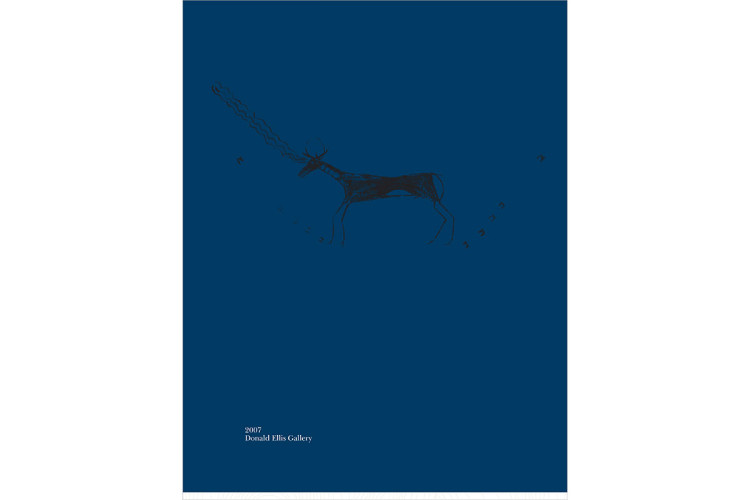
The Creative Potential of Historical Native American Drawings
Artist, writer and educator Mira Schor elucidates the liberating potential emerging between the contemporary and historical paintings on show at the Armory 2017
ca. 1870
buffalo hide, deerskin, red, yellow and blue paint
width: 22"
Inventory # P3409
Sold
The Wellington Collection, Long Island, NY
The Metropolitan Museum of Art, February 28 - May 27, 1984
Pleasing the Spirits, Ewing, Ghylen Press, 1982, pl. 156
“Native American Exhibition at the Metropolitan Museum of Art”, Maurer, American Indian Art Magazine, Autumn 1982, pg. 36
Pearlstone Mathews, Zena. Symbol and Substance in American Indian Art. New York: The Metropolitan Museum of Art, 1984, pg. 20, pl. 11
Donald Ellis Gallery catalogue, 2007, pg. 33
A shield and cover were among the most prized possessions of a Plains warrior in the 19th century. Upon entering adulthood, young braves would go on a vision quest during which a particular patron, usually a spirit animal, would reveal itself in a dream and lend an adult name to the individual. The shield's deerskin cover was commonly painted with imagery associated with the patron, from whom the warrior derived power and protection throughout his lifetime.
The present example depicts a male pronghorn antelope with power lines emanating from its forehead. The pronghorn’s qualities of courage, inquisitiveness and fleetness of foot would have been much revered qualities for a warrior. A warrior's shield also articulated status, rights, privileges and obligations through the partial secrecy surrounding the full meaning of its imagery. This complex interplay between a sophisticated visual language and concealed knowledge conveyed the great power of an individual to a wider audience.
Though fixed tribal attributions are difficult to maintain, this shield cover bears a strong stylistic resemblance to a number of examples with known Apsáalooke collection history. Another shield cover almost certainly created by the same hand was collected by the renowned anthropologist Robert Lowie, and is now in the American Museum of Natural History. It is possible that a warrior created several shield covers with similar imagery over the course of his lifetime, as some might have been lost or damaged in combat, sold or surrendered to authorities.

Artist, writer and educator Mira Schor elucidates the liberating potential emerging between the contemporary and historical paintings on show at the Armory 2017

Reviewing the Armory Show 2017 for Art Agenda, Brian Karl writes that among the hustle and bustle of the fair a series of Ledger Drawings is all the more potent and poignant

Susan More of the Financial Times describes Plains Indian art on show at Donald Ellis Gallery as ‘one of the real show-stoppers’ at Frieze Masters 2014

$35.00 USD